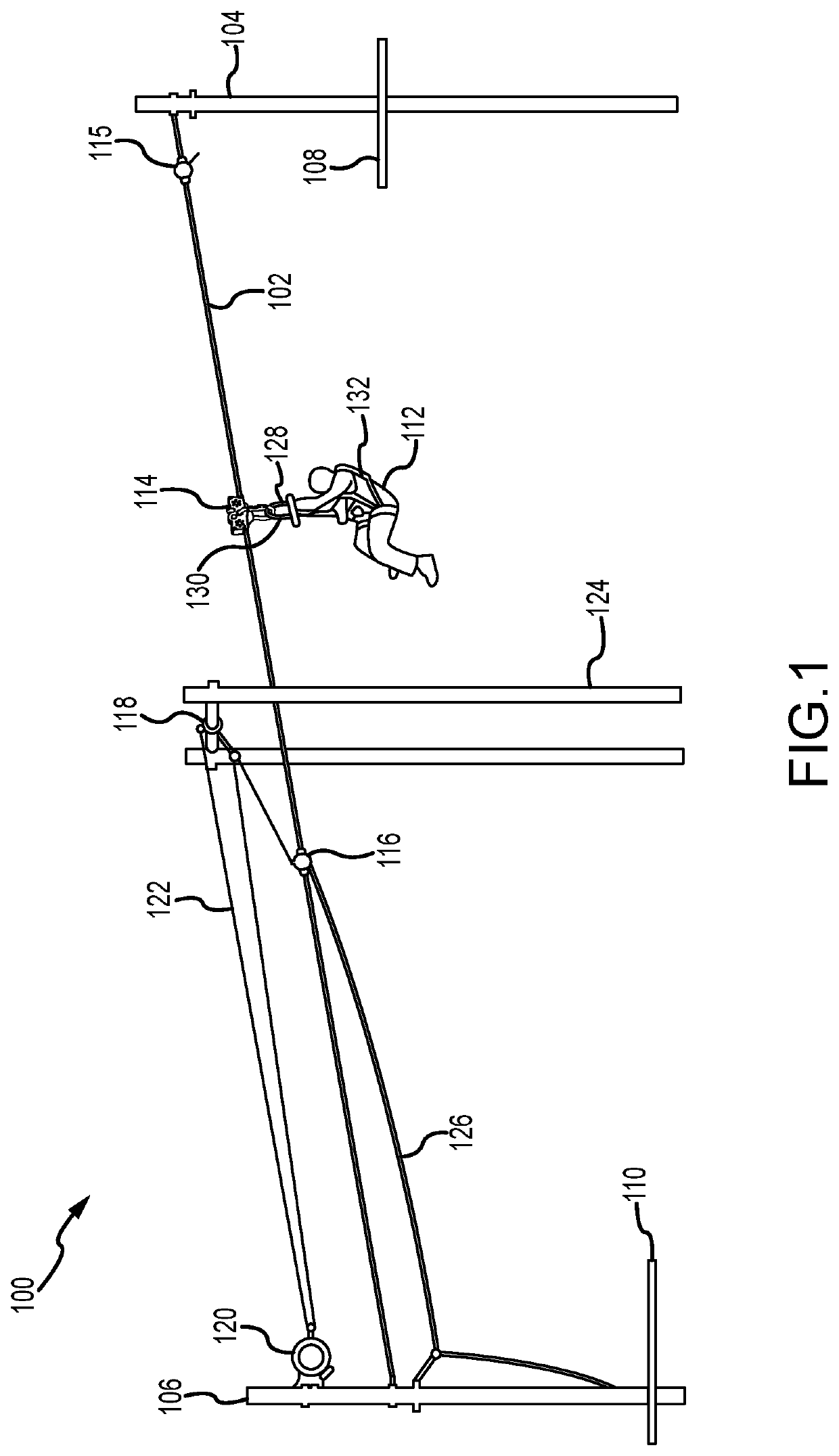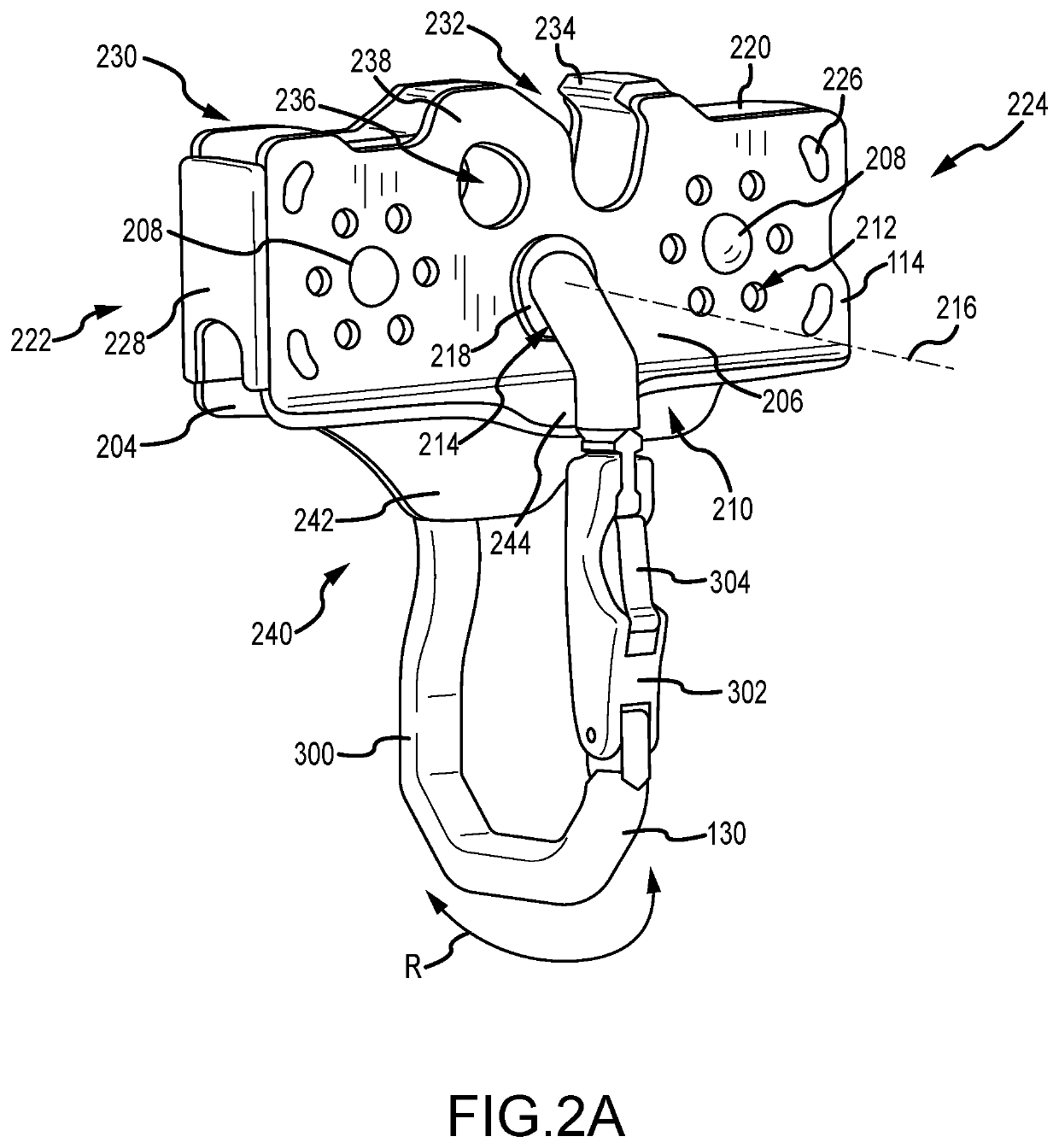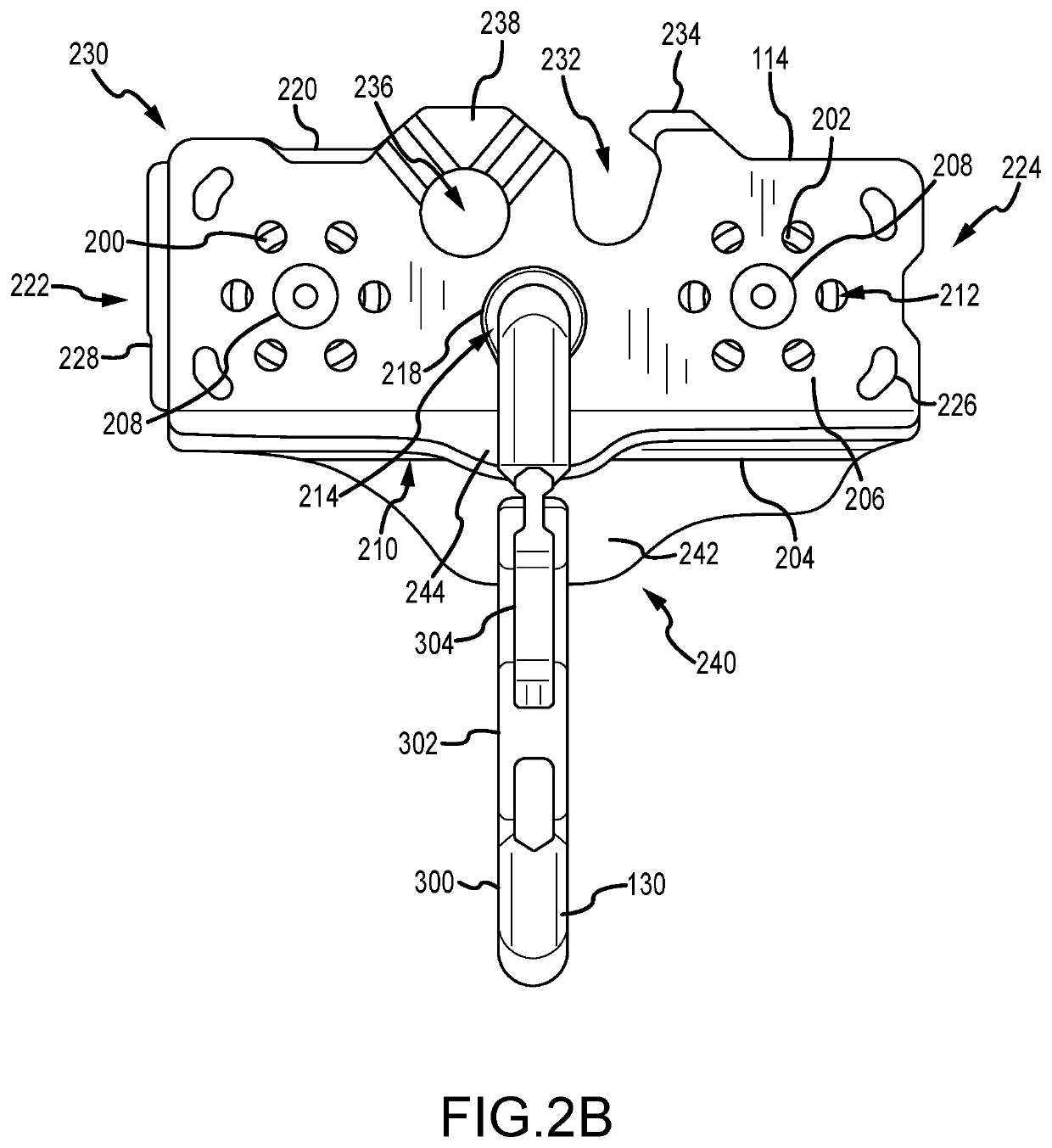Double-lock carabiner
a double-locking, carabiner technology, applied in the direction of vehicle components, fastening means, amusements, etc., can solve the problems of more difficult to use in other activities, more danger and risk for participants, and zip lines
- Summary
- Abstract
- Description
- Claims
- Application Information
AI Technical Summary
Benefits of technology
Problems solved by technology
Method used
Image
Examples
Embodiment Construction
[0024]This disclosure describes examples of a locking carabiner and rider trolley adapted for use with zip line systems. The carabiner may also be used for any other cable and rope intensive activity as required or desired. In an example, the locking carabiner includes a double action locking gate. The gate includes a locking mechanism sized and shaped to be actuated before the gate can be opened. For example, the locking mechanism is configured to be actuated by an object that is to be received by the carabiner like a zip line wire. The locking mechanism extends along the longitudinal axis of the gate and is rotatable in a substantially similar direction and plane of the gate opening rotation. When the locking mechanism is locked, it is in a blocking position with respect to a nose of the carabiner such that the gate is restricted from undesirably and unintentionally opening without first actuating the locking mechanism, thereby increasing safety of the system. Rotation of the lock...
PUM
 Login to View More
Login to View More Abstract
Description
Claims
Application Information
 Login to View More
Login to View More - R&D
- Intellectual Property
- Life Sciences
- Materials
- Tech Scout
- Unparalleled Data Quality
- Higher Quality Content
- 60% Fewer Hallucinations
Browse by: Latest US Patents, China's latest patents, Technical Efficacy Thesaurus, Application Domain, Technology Topic, Popular Technical Reports.
© 2025 PatSnap. All rights reserved.Legal|Privacy policy|Modern Slavery Act Transparency Statement|Sitemap|About US| Contact US: help@patsnap.com



